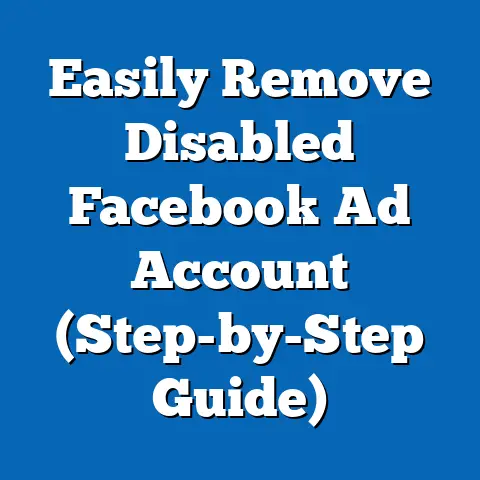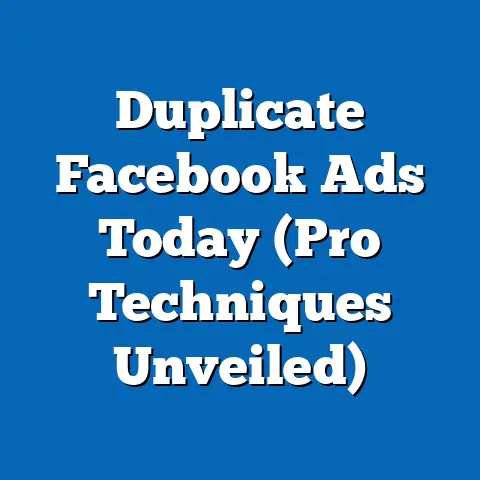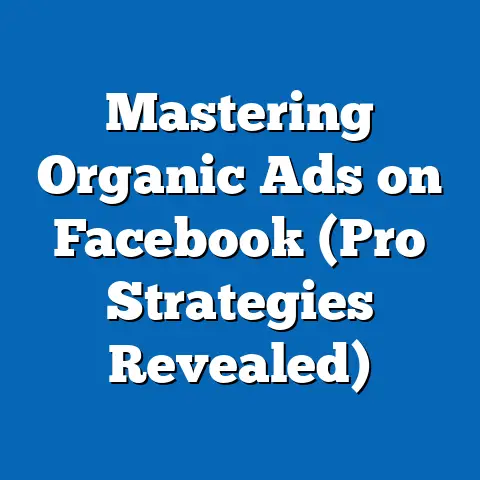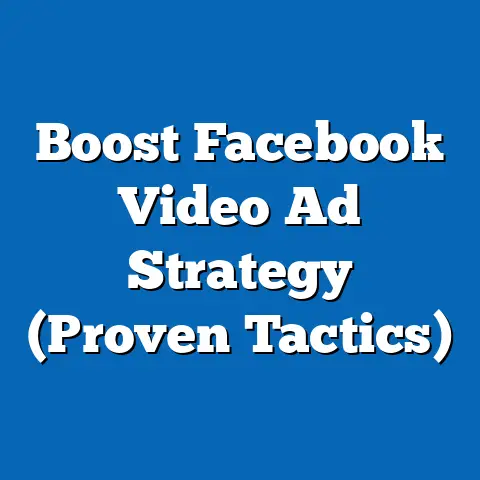Upload Music to Facebook (Ultimate Guide for Creators)
As social media continues to dominate the digital landscape, platforms like Facebook have become powerful tools for creators to share their content and connect with audiences. For musicians and audio creators, uploading music to Facebook offers a unique opportunity to reach a massive, engaged user base. With over 2.9 billion monthly active users as of Q2 2023 (Statista, 2023), Facebook remains one of the largest social platforms globally, making it a critical space for music promotion and fan engagement.
The Value of Uploading Music to Facebook: Key Statistics and Trends
Facebook’s vast user base presents an unparalleled opportunity for music creators to showcase their work. According to a 2022 report by Hootsuite, 67% of Facebook users engage with video content daily, and music videos are among the most shared formats on the platform. This trend underscores the potential for musicians to gain visibility through well-crafted audio-visual posts.
Moreover, the platform’s algorithm favors content that drives engagement, such as likes, comments, and shares. A study by Social Insider (2023) found that posts with multimedia elements, including music and video, generate 2.5 times more engagement than text-only posts. For creators, this means that uploading music in a visually appealing format can significantly boost organic reach.
Historically, music sharing on social media has evolved from basic audio links to integrated experiences. In the early 2010s, platforms like MySpace were the go-to for music discovery, but by 2020, Facebook had solidified its role as a hub for multimedia content. Today, features like Facebook Reels and Stories allow creators to share short, music-driven clips that cater to the platform’s shift toward short-form content—a trend driven by the success of platforms like TikTok.
Demographic Insights: Who’s Listening on Facebook?
Understanding Facebook’s user demographics is crucial for tailoring music content to the right audience. As of 2023, Pew Research Center data indicates that 69% of U.S. adults use Facebook, with significant representation across age groups. While younger users (18-24) make up 24% of the user base, the platform also has a strong presence among older demographics, with 40% of users aged 25-34 and 26% aged 35-54 (Pew Research, 2023).
Gender distribution on Facebook is fairly balanced, with 51% female and 49% male users globally (Statista, 2023). This near parity allows creators to appeal to a wide range of listeners without significant gender bias in reach. Additionally, Facebook’s global footprint means creators can target international audiences—over 70% of its users are outside the U.S. and Canada, with high penetration in countries like India, Indonesia, and Brazil (Hootsuite, 2023).
For music creators, these demographics suggest a diverse audience with varying musical tastes. Genre preferences often align with age and cultural background, so artists should analyze their target listeners using Facebook Insights to refine their content strategy. For instance, older users may gravitate toward classic rock or jazz, while younger users often engage with pop, hip-hop, or electronic music.
Why Upload Music to Facebook? The Benefits for Creators
Uploading music to Facebook isn’t just about visibility—it’s about building a community and leveraging the platform’s tools for growth. One major benefit is the ability to create a dedicated artist page, which acts as a centralized hub for fans to access music, updates, and events. According to a 2022 survey by Sprout Social, 78% of consumers follow brands (including artists) on social media to stay updated on new content.
Another advantage is the potential for viral reach. Facebook’s sharing feature allows fans to easily distribute music to their networks, amplifying exposure. A viral music post can garner thousands of shares overnight, as seen with independent artists like Tate McRae, whose early covers on Facebook contributed to her rise to fame.
Additionally, Facebook offers integration with other Meta platforms like Instagram, enabling cross-posting and broader reach. With over 1 billion Instagram users (Statista, 2023), this connectivity can help creators tap into overlapping audiences without duplicating efforts.
Step 1: Understand Facebook’s Music Guidelines
Before uploading, familiarize yourself with Facebook’s copyright and content policies. The platform uses automated systems like Content ID to detect copyrighted material, and unauthorized uploads can result in content removal or account penalties. As of 2023, Facebook has partnerships with major music labels and publishers, allowing certain licensed tracks to be used in posts via the Music Library (Meta, 2023).
For original music, ensure you own the rights to the content. If you’re using third-party elements (e.g., beats or samples), confirm they are royalty-free or properly licensed.
Step 2: Choose the Right Format
Facebook supports various formats for music uploads, primarily through video or audio posts. MP4 files are recommended for video content with embedded audio, while direct audio uploads are limited unless shared via a third-party link (e.g., SoundCloud). A 2022 study by Buffer found that videos under 2 minutes long receive 66% more engagement than longer formats, so consider short clips for maximum impact.
Step 3: Upload via Desktop or Mobile
To upload, log into your Facebook account and navigate to your profile or artist page. Click “Create Post,” then select “Photo/Video” to upload a file from your device. Add a compelling caption, relevant hashtags (e.g., #NewMusic, #IndieArtist), and tag collaborators to increase visibility.
For Stories or Reels, use the mobile app to upload short-form content. These formats auto-play in users’ feeds, increasing the likelihood of engagement. According to Meta, Reels have a 22% higher interaction rate than standard video posts (Meta Business Blog, 2023).
Step 4: Optimize for Engagement
After uploading, encourage fans to interact with your post by asking questions or prompting feedback (e.g., “What do you think of my new single?”). Use Facebook Live to premiere music and engage with viewers in real-time. Data from Social Media Today (2022) shows that live videos generate 6 times more interactions than pre-recorded content.
Step 5: Monitor Performance with Insights
Facebook’s Insights tool provides data on reach, engagement, and audience demographics for each post. Use this to track which types of music content resonate most with your followers. For example, if a live performance clip outperforms a studio recording, focus on creating more live content.
Monetization Opportunities for Music on Facebook
Beyond exposure, Facebook offers several ways for creators to earn revenue from their music. Understanding these options can turn a passion project into a sustainable income stream.
Facebook Stars and Fan Subscriptions
Facebook Stars allow fans to tip creators during live streams, with each Star equivalent to $0.01 USD. For musicians hosting virtual concerts, this can add up quickly—top creators earn thousands monthly through Stars (Meta Creator Support, 2023). Fan Subscriptions, available to eligible pages, offer exclusive content for a monthly fee, providing a steady revenue source.
Ad Revenue Sharing
Creators with significant followings can monetize video content through in-stream ads. According to Meta’s 2023 guidelines, pages with at least 10,000 followers and 600,000 minutes of view time in the last 60 days qualify for this program. Music videos with high engagement can generate substantial ad revenue, with payouts varying based on audience location and ad impressions.
Partnerships and Sponsored Content
As your presence grows, brands may approach you for sponsored posts or collaborations. For instance, music gear companies often partner with artists to promote products in videos. A 2022 report by Influencer Marketing Hub found that 62% of creators on social platforms earn income through brand deals, with payouts ranging from $200 to $20,000 per post depending on audience size.
Best Practices for Music Creators on Facebook
To stand out in a crowded digital space, creators must adopt strategies that enhance visibility and engagement. Here are evidence-based tips to optimize your music presence on Facebook.
Create High-Quality Content
Invest in good audio and video production to ensure your music stands out. A 2021 survey by Nielsen found that 73% of social media users are more likely to share content with clear sound and visuals. Use tools like Canva or Adobe Premiere to add captions or effects that grab attention.
Post Consistently and Strategically
Consistency is key to building an audience. Data from CoSchedule (2023) indicates that posting 1-2 times per day on Facebook maximizes engagement without overwhelming followers. Schedule posts during peak user activity—typically 11 a.m. to 1 p.m. on weekdays—using Facebook’s scheduling feature.
Engage Actively with Fans
Respond to comments and messages promptly to foster a loyal community. A study by Sprout Social (2022) revealed that 68% of consumers feel more connected to brands that reply to their interactions within 24 hours. Host Q&A sessions or polls to keep fans invested in your journey.
Leverage Facebook Groups
Join or create niche music groups to connect with like-minded creators and fans. With over 10 million active groups on Facebook (Meta, 2023), these communities are ideal for networking and sharing your work. Be mindful of group rules to avoid spamming.
Challenges and Pitfalls to Avoid
While Facebook offers immense potential, creators must navigate certain challenges. Copyright issues are a common hurdle—unauthorized use of music can lead to content takedowns or legal action. Always use original tracks or licensed material to stay compliant.
Another challenge is algorithm dependency. Facebook’s News Feed prioritizes content based on engagement, meaning low-performing posts may receive limited visibility. To counter this, focus on creating shareable, interactive content and consider boosting posts with paid ads if budget allows.
Finally, oversaturation can dilute your impact. With millions of creators vying for attention, standing out requires unique branding and consistent innovation. Avoid repetitive content by experimenting with formats like behind-the-scenes footage or acoustic sessions.
Historical Context: The Evolution of Music Sharing on Social Media
Music sharing on social platforms has transformed dramatically over the past two decades. In the early 2000s, MySpace was the epicenter for independent artists, with over 25 million unique visitors at its peak in 2008 (ComScore, 2008). Bands like Arctic Monkeys gained fame through the platform’s music-sharing features.
By the 2010s, Facebook emerged as a dominant force, integrating music and video into its ecosystem. The introduction of Facebook Live in 2016 marked a turning point, enabling real-time performances that connected artists with global audiences. Today, features like Reels and Stories reflect the shift toward bite-sized, music-driven content, aligning with user preferences for quick, engaging media.
Comparing historical data to current trends, it’s clear that accessibility has increased. While early platforms limited reach to tech-savvy users, Facebook’s universal appeal—spanning ages and regions—has democratized music promotion. However, this also means greater competition, requiring creators to adapt to evolving algorithms and formats.
Data Visualization: Engagement Metrics for Music Content on Facebook
To illustrate the impact of music content, imagine a bar chart comparing engagement rates across content types on Facebook. Based on Social Insider’s 2023 data, music videos average a 5.2% engagement rate, compared to 2.1% for text posts and 3.8% for image posts. A line graph tracking historical engagement could show a steady rise in music video interactions from 2018 to 2023, reflecting growing user interest in multimedia.
Additionally, a pie chart of demographic engagement could highlight that 35% of music content interactions come from users aged 25-34, followed by 28% from 18-24 and 20% from 35-44 (based on Pew Research, 2023). These visuals would underscore the platform’s diverse audience and the effectiveness of music as an engagement driver.
Broader Implications and Future Trends
Uploading music to Facebook is more than a promotional tactic—it’s a gateway to building a sustainable career in a digital-first world. As the platform continues to prioritize video and short-form content, creators must adapt by producing high-quality, concise material that captures attention instantly. The rise of AI tools for content creation and Meta’s investment in virtual reality (e.g., Horizon Worlds) suggest that immersive music experiences may soon redefine fan engagement.
On a societal level, Facebook’s role in music discovery democratizes access to art, allowing independent creators to bypass traditional gatekeepers like record labels. However, this also raises questions about fair compensation and data privacy, as artists rely on ad-driven platforms for income. As of 2023, only 11% of creators feel adequately compensated by social media monetization programs (Influencer Marketing Hub, 2023), signaling a need for better revenue models.
Looking ahead, the integration of music with emerging technologies—such as augmented reality filters or blockchain-based royalty systems—could further transform how creators share and profit from their work. For now, mastering Facebook’s current tools and policies remains the most effective way to build an audience and thrive as a music creator.
This guide, spanning detailed insights and actionable steps, aims to empower creators to leverage Facebook’s vast potential. By combining data-driven strategies with creative innovation, musicians can turn likes and shares into lasting impact. As the digital landscape evolves, staying informed and adaptable will be key to sustained success.






